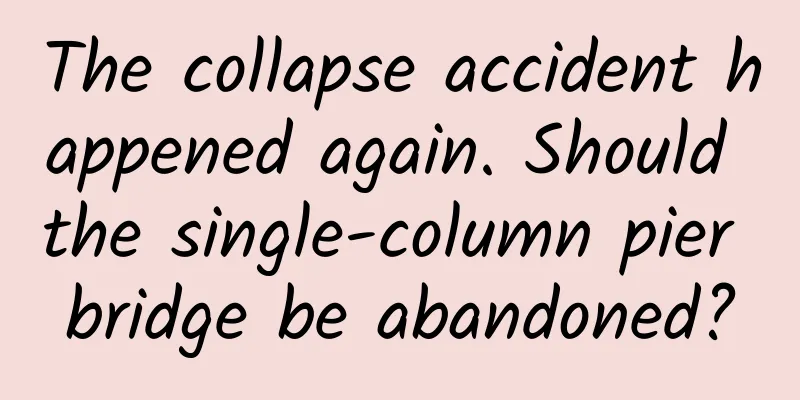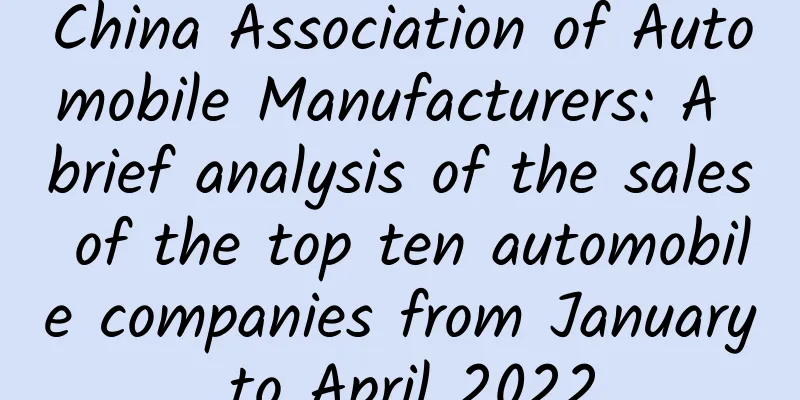The collapse accident happened again. Should the single-column pier bridge be abandoned?

|
Key Points ★ Single-column pier bridges are indeed more prone to overturning accidents due to their own structural constraints. ★ A single pillar is not a sin, it also has many advantages. The most fundamental way to ensure safety is not to overload it. In the past 2021, a bridge rollover accident attracted much attention: on the afternoon of December 18, the ramp bridge of the Huyu Expressway to the Daguan Expressway in Ezhou City, Hubei Province rolled over, killing 4 people and injuring 8 people. According to the photos taken at the scene at that time, the bridge deck and piers were intact, and there was no cross-section; the bridge deck tilted to one side, combined with the single-column pier, it can be judged that it was a typical rollover accident. The accident site. According to the person in charge of the Edong Bridge Company, among the four vehicles that fell with the bridge, there were three large trucks, one of which was a 198-ton truck pulling a substation, and the other two trucks behind were pushing it. The three vehicles were connected by connecting rods. After the bridge deck overturned, the severely overweight truck broke into two pieces. | China News Service The overturning accident was caused by the uneven force on the bridge deck (extreme force on one side). The previous overturning accident of the Wuxi National Highway 312 overpass and the Harbin Yangmingtan Bridge overturned due to the same reason. In the past decade, single-column pier bridges have frequently appeared in bridge collapse accidents, which has also caused netizens to debate: Why do such bridges still exist? Is it really not a design problem? In fact, bridge design experts have also considered this issue. In short, there are many factors to consider in bridge construction, and single-column pier bridges are indeed a more reasonable choice in many cases. When we walk in the city, we often see single-column piers on viaducts. Understanding some basic knowledge of bridge design may help us avoid misunderstandings about single-column pier bridges. 01 The reason why single-pillar pier bridges are prone to collapse A single-pillar pier bridge is just like its name, it is a bridge with a single-pillar pier in the middle. The size of the bridge deck above it is often much larger than the pier area, so it is easy to generate very large moments on both sides of the bridge deck, especially at the edge, so it is easy to understand why a capsizing accident occurs. In this incident, the three heavy trucks and the extra-large substation equipment they were transporting weighed a staggering 482 tons, 2.45 times the weight limit for vehicles on the bridge (197 tons). And because the bridge deck was being maintained at the time, the vehicles did not follow the standard for large-scale transportation and drove in the middle of the ramp, but pulled over to the outside of the bridge. This is how the tragedy happened. A Boeing 747 weighs about 170 tons, and the overloaded truck has reached 198 tons, while the weight limit on my country's highways is 49 tons. This degree of overloading is rare. | Tuchong Creative 02 Why do we still build single-column pier bridges? So why is such a "dangerous" design still widely used? The main consideration is the two most critical factors in bridge construction design: purpose and cost. In fact, these two factors cannot be completely separated. In actual operation, it is inevitable to give priority to minimizing the cost while meeting the purpose. In terms of usage, the most common application scenarios of single-column pier bridges are urban elevated roads and the cross-line section of highways. The former requires minimizing the occupation of precious urban roads, while the latter requires minimizing the expropriation of agricultural land. Under the urban elevated road, the single-column pier bridge only occupies the area of the pier on the road surface, and just forms a central isolation zone. Ordinary urban roads can be laid on both sides, and at most half a lane is sacrificed on each side. If symmetrical double piers are used, not only will the space in the center of the pier be difficult to use, but a lane will also be lost on both sides. Unless the road width above is extremely wide (it can cross the road below), double piers are generally not chosen. Single column piers are often used in urban elevated roads, which occupy a small area. | Tuchong Creative At the cross-line points of the expressways, a few bridge piers can support the interaction and connection between the expressway routes, and the farmland occupied below is only a few dozen square meters per acre. With this advantage, and considering that the transportation of oversized items weighing hundreds of tons only occurs once in several years, and even if it does, detours can be taken, or special road services can be provided (such as closing the road, taking the middle of the ramp, etc.), it is no surprise that single-column pier bridges are widely used. Moreover, this relatively simple single-column pier bridge has the characteristics of short construction period, low construction difficulty, and easy later maintenance, and its cost-effectiveness can be said to be very high. In addition, studies have shown that compared with double columns, single-column piers are more collision-resistant: a 4.0-meter-diameter circular single column has the same volume as two 2.83-meter-diameter cylinders, but its stiffness is four times that of a 2.83-meter-diameter cylinder. This is particularly important in many ramps, river and sea approach bridges, and urban interchanges. Moreover, for some more complex interchanges, it is basically impossible to use no single column due to space constraints. If this bridge uses a single column, and the materials of three columns are combined into one single column, its stiffness will increase to 9 times, and this car probably won’t be damaged. | Yin Delan, "Redundancy in Bridge Design" (2013) From this point of view, the single-column pier bridge is not a backward design, but on the contrary it is the best or even the only choice in many road construction scenarios. 03 Preventing hidden dangers of single-pillar pier bridges Although single-column pier bridges have many advantages, due to their own structural constraints, this type of bridge is indeed more prone to catastrophic instability and overturning in extreme conditions such as strong earthquakes and severe overloading. For example, in Japan, which has a complex terrain and a high population density, a large number of single-column pier bridges are used in road construction. Japan is also a country prone to earthquakes. The Great Hanshin Earthquake in 1995 directly paralyzed the nearby highway network, and 12 bridges had their decks fall or overturned, of which 4 single-column pier bridges all overturned on a large scale without exception. In 1995, a magnitude 7.2 earthquake struck Hanshin, Japan, killing more than 6,400 people and causing the Kobe Line's more than 600-meter-long single-column pier bridge to collapse. | Internet photo However, high-intensity earthquakes are rare events after all, and at that intensity, the earthquake resistance of various bridge structures is very limited. But overturning caused by overloading is a disaster that can be completely avoided. Generally speaking, there is a big gap between the vehicle load limit stipulated by the bridge and the actual weight that the bridge can bear, which is called safety redundancy. If the overload is only small, but still within the actual load-bearing range of the bridge, it can be assumed that the structure of the bridge will not be substantially damaged and its lifespan will not be affected. However, if the bridge is overloaded significantly or moderately overloaded for a long time, it may cause real damage to the bridge. This is the significance of strict overloading. At present, there are still many drivers and transportation companies who ignore the red line, which eventually leads to the loss of bridge life and even serious accidents. In view of the characteristics of single-column piers, the new version of the bridge design code promulgated in 2018 has already made relevant provisions and requirements for the anti-overturning of single-column piers. Relevant bridge management units have also carried out large-scale anti-overturning reinforcement work for existing single-column pier bridges. However, the various reinforcement methods currently used cannot bring an order of magnitude increase in the load-bearing capacity of the bridge, and the load limit of passing vehicles is rarely increased after repair. In general, the fundamental way to avoid tragedy is to regulate transportation behavior through administrative means and prohibit overloaded vehicles from passing. 04 Road administration guarantee for large-scale transportation There is no further news about the collapse of the Edong Bridge. However, according to the information available, although the accident was caused by overloading, there are some questions about the road administration: the vehicle had obtained a 198-ton overload permit on the highway in Shaanxi, but it did not leave the highway and crossed several provinces to Hubei before the accident. In Hubei, they only obtained a 99-ton overload permit. However, the truck owner said that the person who coordinated the permit had died in the accident and the details were unknown. Putting aside the specific doubts about this accident, many netizens are also very curious about how such large-scale transportation is normally carried out? According to Zhihu netizen "Yechuang Tingyu", generally speaking: first, try not to transport large items, and disassemble what can be disassembled into parts and transport them separately; second, try not to take the highway to avoid affecting normal driving; third, try not to take bridges and culverts (bridges and culverts) - because once a bridge or culvert is damaged, it is much more difficult to repair than a road surface. Large-scale transportation places high demands on vehicles. It is common for tires to burst on the way, so vehicles must drive very slowly. Low speed + large size + frequent stops have a great impact on high-speed traffic. | Tuchong Creative If you encounter large items that cannot be manufactured on site, such as prefabricated bridge components and super-large transformers, you must handle them very carefully. First, you must select a possible route and survey all bridges and culverts along the route; then determine the bearing capacity of the bridges and culverts, and reinforce those that do not meet the load-bearing requirements; finally, during the transportation process, the road administration will provide full support - the road administration vehicle in front will lead the way, the road administration vehicle in the back will be isolated, and the road will be closed directly when necessary, etc. The transportation unit will monitor the entire process, especially the stress of the bridges and culverts must be monitored in real time, and the transportation will be stopped immediately if there is any abnormality. It has to be said that transporting large items is an extremely expensive and time-consuming task, and it is generally not carried out unless it is absolutely necessary. Once a large item is on the road, it is a test for the entire traffic along the route. Single-column pier bridges are no exception. Only by strictly enforcing the rules for crossing the bridge and not skipping any of the necessary procedures can the safety of the bridge and freight personnel be truly guaranteed. Author: Guo Yang, Postdoctoral Fellow in Structural Mechanics, Northeastern University Reviewer | Pan Keming, Deputy Chief Engineer of the First Institute of Road Traffic Engineering, Professor-level Senior Engineer Editor | Ding Zong Editor | Gao Peiwen This article is produced by "Science Facts" (ID: Science_Facts). Please indicate the source when reprinting. The pictures in this article are from the copyright gallery and are not authorized for reproduction. |
<<: Can you take away all the dirt with just one spray? Another day of being cheated by short videos
>>: The Great Voyage丨Sheepskin Raft on the Yellow River: Can sheepskin be “blown”?
Recommend
How to activate new users?
New user activation is the first step for users t...
Where does the waste from the ship's toilet go? Is it discharged directly into the sea to feed the fish?
If you were to ask which is the most polluted riv...
Advertising plan for the beauty industry
1. Overview of the Lifestyle Beauty Industry The ...
How do product managers bypass the iOS sandbox mechanism?
Let me first explain what the iOS sandbox mechani...
With an annual output of 350 billion, China's automotive chips are accelerating the de-Americanization, and Bill Gates' prediction is about to come true
In fact, what is more worrying than the "inv...
He "changed careers" many times to meet national needs and built my country's first photolithography machine!
Under the cultivation and education of the Party,...
Do you like to eat smelly food? It smells like monkey shit!
Although Brother Rong was born in Shanghai, he gr...
Android O Developer Preview is finally out! Official introduction of new features
Posted by Dave Burke, VP of Engineering, Google S...
Should drowning first aid be treated by "hanging upside down to control water"? Drinking more water will help you recover from a cold faster? Here comes the list of scientific rumors for May →
1. E-cigarettes are healthy and harmless. Rumor c...
At the age of 45, he solved a century-old problem with a paper, and at the age of 85, he stood on the country's highest science and technology podium
From traveling across mountains and rivers to car...
How should the landing page be designed during the information flow delivery process?
Before I start this article, I want to ask you a ...
BAT is competing for mini programs. Who will be eliminated first?
Since WeChat launched mini programs, everyone has...
Do you think you can do channel promotion well if you have a budget? You need these 4 points
Promoters should all have a feeling that the budg...
Huawei is making a backup operating system, but Google doesn't dare to privatize Android
Recently, the news about Huawei's self-develo...
In the next 10 years, which Internet vertical fields are most suitable for entrepreneurship?
[[155596]] I heard that the Internet is full of g...









